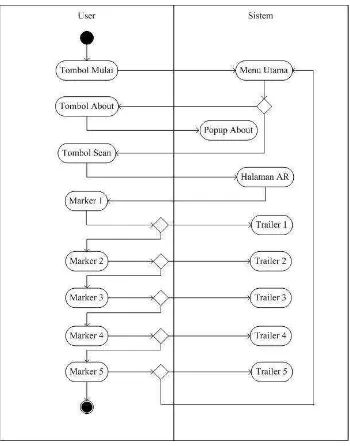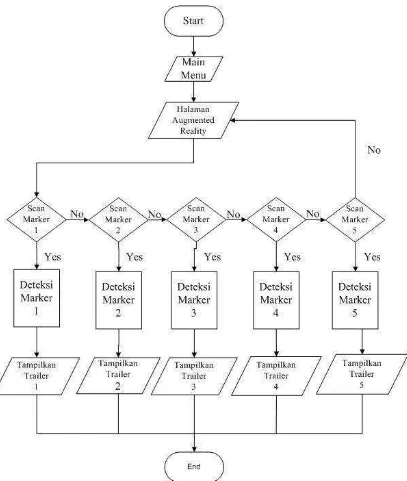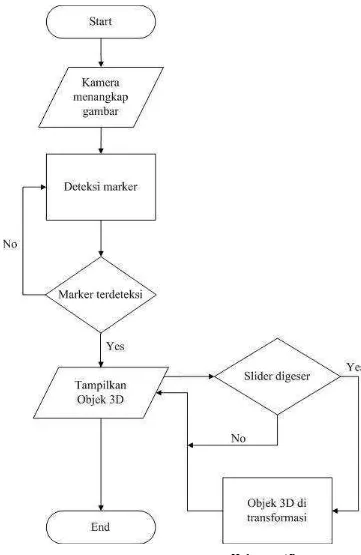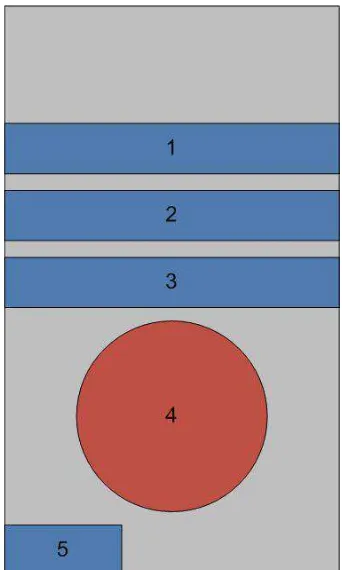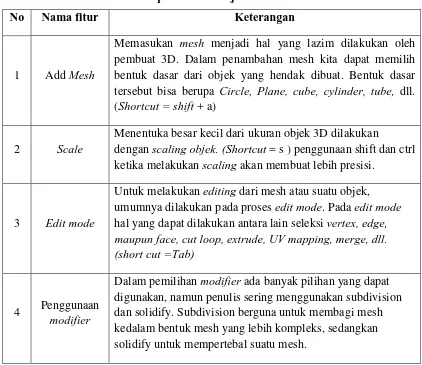Informasi Dokumen
- Penulis:
- A. R. Nugroho
- Sekolah: Universitas Komputer Indonesia
- Mata Pelajaran: Teknik Informatika
- Topik: Implementasi Augmented Reality Pada Cover Dvd Untuk Menampilkan Trailer Film Melalui Smartphone Berbasis Android
- Tipe: Skripsi
- Tahun: 2013
- Kota: Jakarta
Ringkasan Dokumen
I. Introduction: Augmented Reality and Educational Applications
This research paper, "Implementasi Augmented Reality Pada Cover DVD Untuk Menampilkan Trailer Film Melalui Smartphone Berbasis Android," explores the application of augmented reality (AR) technology to enhance the DVD purchasing experience. The core innovation lies in overlaying movie trailers onto DVD covers using an Android smartphone app. This approach has significant implications for educational objectives, particularly in showcasing the practical applications of AR in various fields like multimedia, marketing and consumer engagement. The study's academic value lies in its detailed analysis of AR implementation and its potential to revolutionize how consumers interact with products, ultimately improving their understanding and engagement.
II. Literature Review: Theoretical Foundations of Augmented Reality
The literature review establishes the theoretical underpinnings of AR, drawing upon existing research on AR's characteristics (Azuma, 1997), its position within the reality-virtuality continuum (Milgram et al., 1994), and its diverse applications across various sectors (Berki, 2011). Key concepts examined include the integration of real and virtual environments, real-time interactivity, and 3D registration. The review also analyses previous implementations of AR in related fields, such as interactive catalogs (Rifa’I et al., 2014) and educational museum applications (Yudliantika et al., 2013), providing context for the current study's approach. This section highlights the established body of knowledge on AR and its potential for educational innovation.
III. System Analysis and Design: Methodology and Implementation
This section details the methodology of the AR application development. It outlines the system analysis, including problem identification (difficulties consumers face in selecting films) and requirement specification (functional and non-functional requirements). The design process is explained using Unified Modeling Language (UML) diagrams, including use case diagrams, activity diagrams, and sequence diagrams, illustrating the user interactions and system workflows. The interface design is presented with screenshots and descriptions of each component. The creation of 3D objects using Blender and marker design using Vuforia SDK are also detailed. The pedagogical value here stems from the systematic approach to system design and the illustration of software engineering principles applied within a creative context.
3.1 System Analysis
This subsection focuses on identifying the core problem: the difficulty consumers experience in evaluating films before purchase. It leverages Ishikawa diagrams to visually represent the contributing factors and establishes the need for a system enabling consumers to view trailers directly from the DVD cover using AR. The analysis of both functional (e.g., markerless tracking, video playback) and non-functional requirements (e.g., user-friendliness, performance) emphasizes the practical considerations in AR development. The academic significance lies in demonstrating a systematic approach to needs assessment crucial in technological design and implementation.
3.2 Visual Modeling using UML
This subsection details the use of UML to model the system’s functionality. Use case diagrams illustrate user interactions, activity diagrams depict workflows, and sequence diagrams show the interaction between system components. This systematic approach to software design enhances the clarity and understanding of the development process. The inclusion of these diagrams showcases the rigor of the design approach, demonstrating a strong pedagogical element related to software engineering best practices.
3.3 Flowchart and Interface Design
This subsection presents the visual representations (flowcharts) of the application's logic and details the design of the user interface (UI). Screenshots of the main menu, augmented reality view, and pop-up windows illustrate the UI elements and their functionality. A detailed description of each element reinforces the usability and user experience. This serves as a practical demonstration of UI/UX design principles, valuable in both software engineering and instructional design.
3.4 3D Object and Marker Design
This subsection delves into the specifics of creating the 3D movie trailer visualization and the design of the DVD cover markers. It describes the use of Blender for 3D modeling and the Vuforia SDK for image target creation. This detailed explanation provides practical examples of 3D modeling and AR marker design, offering significant pedagogical value in media technology and digital design.
IV. Implementation and Results: Testing and Evaluation
This section presents the implementation details of the AR application, including the programming language (C# in Unity), the development environment (MonoDevelop), and the building of the Android APK. Specific code snippets for key functionalities (splash screen, video control, zoom) are provided to illustrate the application's inner workings. The results section includes screenshots of the application interface and demonstrates the testing methodology, encompassing black-box testing to validate the functionalities. The evaluation encompasses testing of marker detection, video playback, and zoom functionalities. This systematic testing approach demonstrates the importance of rigorous evaluation in software development and research, highlighting the application's effectiveness and the impact of light and focus on marker recognition.
V. Conclusion and Recommendations: Educational Significance and Future Directions
The conclusion summarizes the key findings: AR effectively enhances the DVD selection process, the system successfully displays movie trailers, and marker detection is affected by lighting conditions. Limitations (app size, performance) are also discussed. Recommendations for future research include improving 3D modeling, exploring Unity features, optimizing video compression, and avoiding high-definition videos. The educational value lies in the demonstration of a successful AR application, its potential impact on consumer behaviour, and the suggestions for further improvement, highlighting the iterative nature of technological development and the importance of ongoing evaluation.
